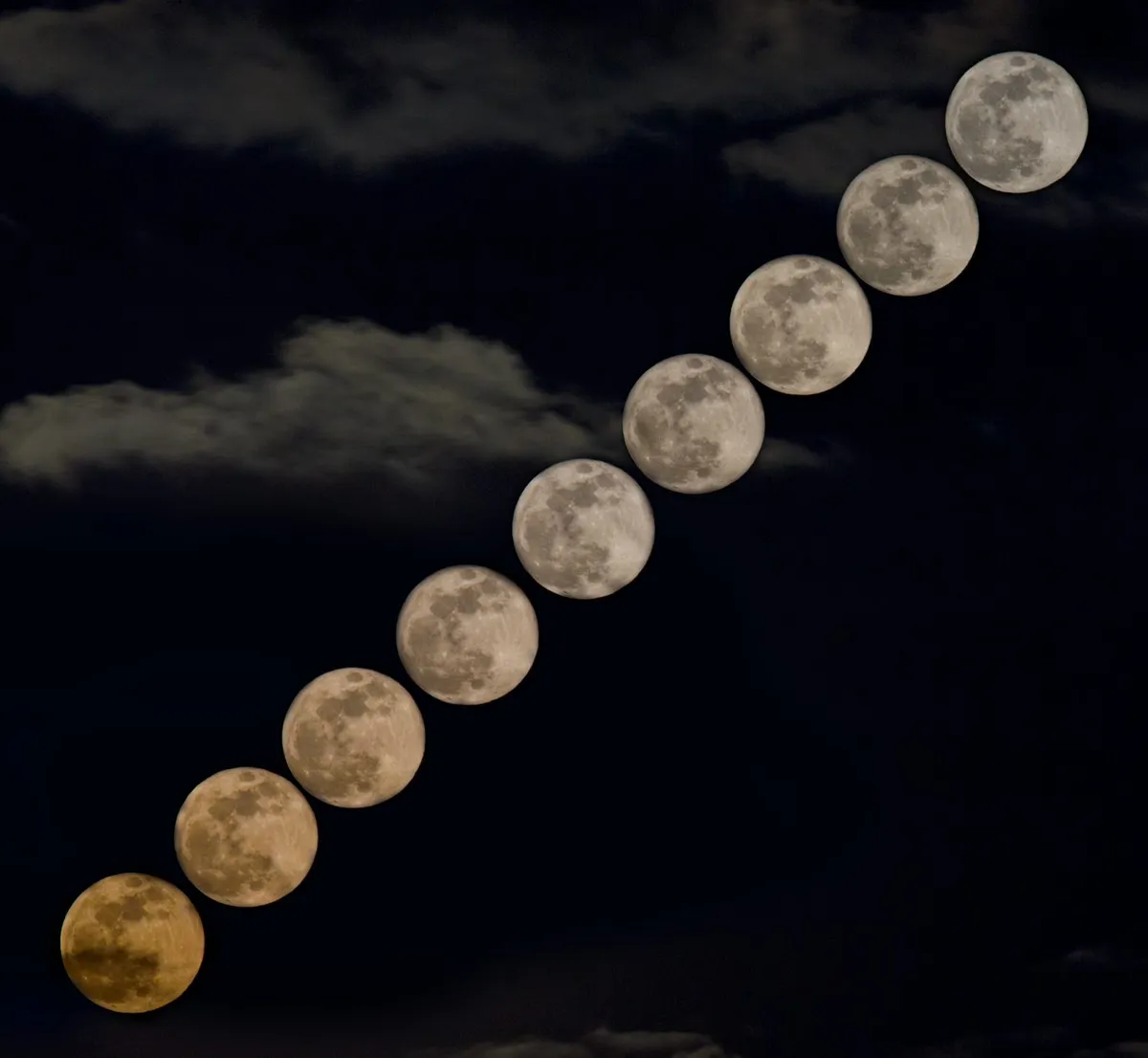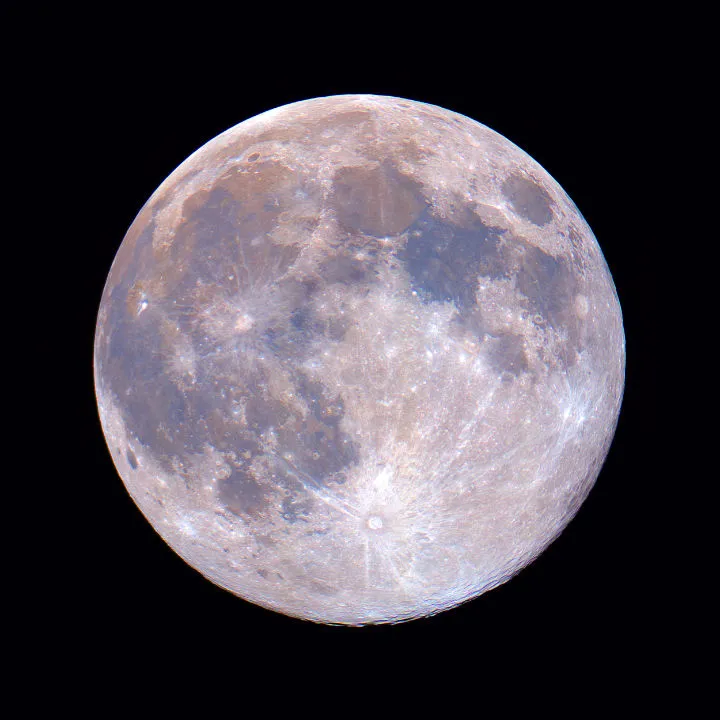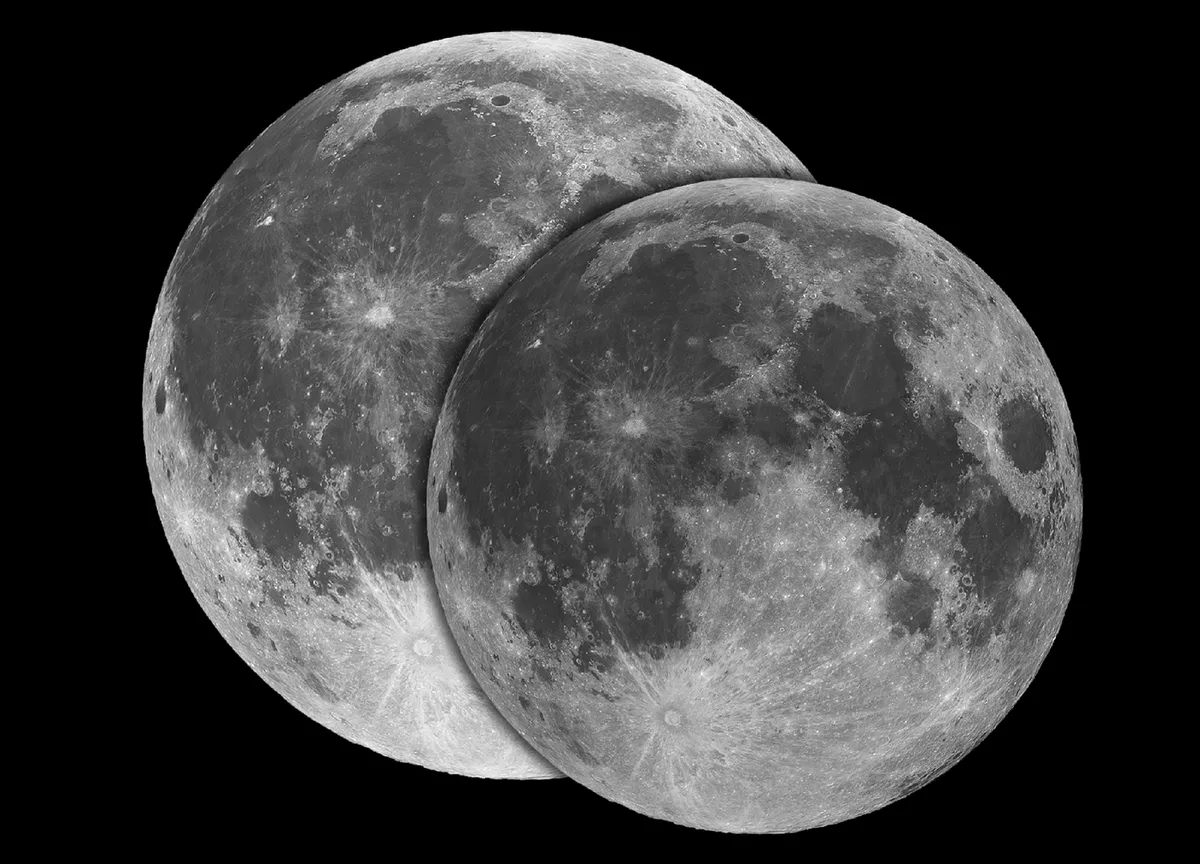Studying the Moon can reveal the effects of the ever changing lunar phases caused by the varying Sun-Moon-Earth angle. From thin waning and waxing crescents to the sky-obscuring glare of a full Moon, the phases of the Moon are an integral part of our lives.
But there’s another effect that may not be so obvious, which comes about because the distance between you and the Moon is not constant, which is what leads to a so-called supermoon.
The variation occurs in two ways.The first is connected with moonrise and moonset, when the Moon is physically slightly further from you than if it were overhead.

Technically, the Moon would be closest if you could draw a straight line between it, you and Earth’s centre, but when rising or setting, the Moon is approximately an Earth radius further away than when positioned at its closest possible position.
The difference comes to several thousand kilometers, yet although sizeable, it only has a small effect on the Moon’s apparent size.
The Moon appears a little smaller when low down – and this is countered by the optical effect known as the Moon illusion in any case.

Track the changing size of the Moon
A more significant variation comes from the Moon’s elliptical orbit. Here the difference between the perigee (closest) and apogee (furthest) distance is significant at around 43,000km.
Lunar perigee occurs once every lunar orbit, about once a calendar month, and on the 3 or 4 times a year this coincides with a full or new Moon it’s known as a supermoon.
To show this variation, you'll need to photograph the Moon with a telescope or telephoto lens that can produce a lunar image which fills at least half the imaging frame of a digital camera.

Then attempt to image the Moon every day over the course of a month (this is the hard part as the weather will interfere). Make sure the setup is the same for all the shots you obtain.
Once you’ve collected as many phase images as possible, open them in a program like GIMP and rotate each disc so the Moon’s ‘centre-line’ is vertical.
This is easy to determine for crescent Moons, as it’s the imaginary line connecting the crescent’s two points. For gibbous phases it can be trickier, but still fairly obvious.

Arrange the images to show the Moon’s apparent diameters as close as possible to side-by-side, like in our image, lining them up in day order.
Amazingly, this simple comparative arrangement shows something quite incredible: the periodic variation in the apparent diameter of the Moon caused by its continually varying distance from Earth.
Pete Lawrence is an experienced astronomer and a co-host of The Sky at Night. This article originally appeared in the December 2020 issue of BBC Sky at Night Magazine.

